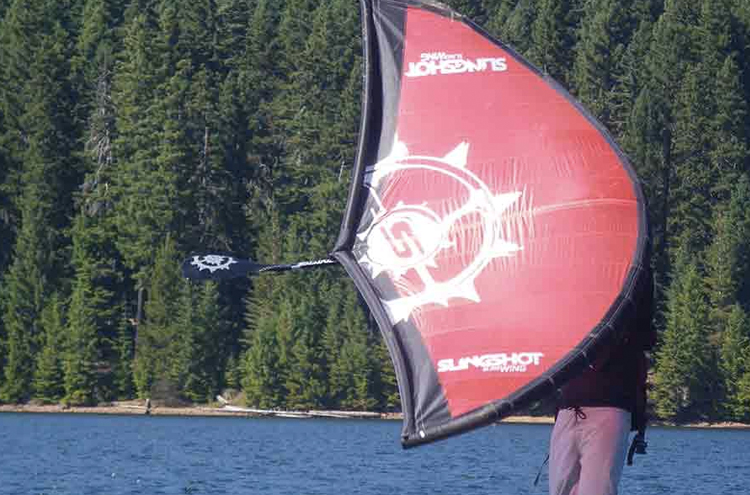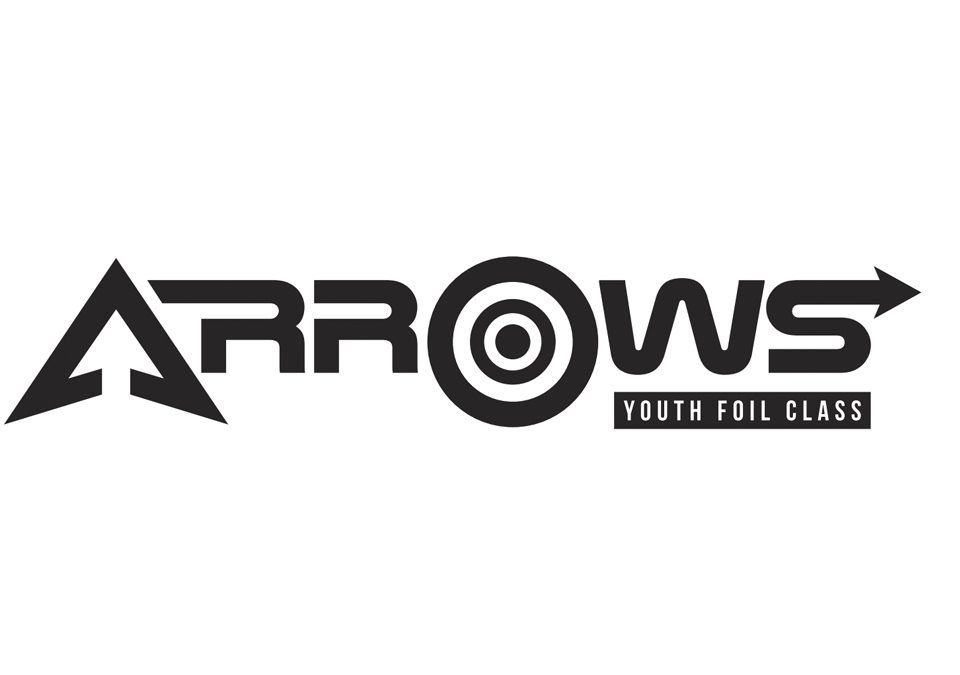TOP 5 QUESTIONS ANSWERED ABOUT WINGSURFING AND THE SLINGWING |2019
INTRODUCING THE SLINGWING FOR WINGSURFING & WING FOILING
Sometimes being first can be messy. So we thought we would offer an authentic back story and timeline on the development of the original Slingwing which is developed explicitly for Wingsurfing, or Wing Foiling as some people like to call it.
A Brief History
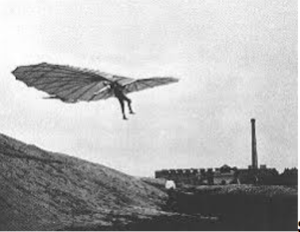
Some crazy dude with a ton of inspiration! There is nothing new about a handheld wing designed to pull you along, or even maybe trick yourself into thinking you will be able to fly!
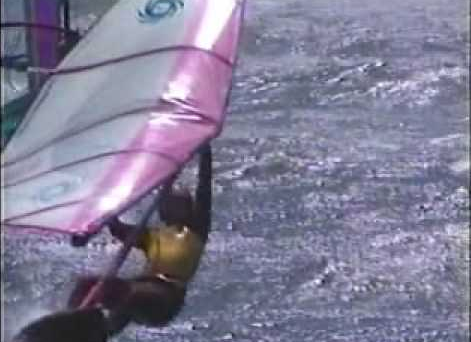
Tom Magruder Circa 1986. The concept, inspired by a horizontal sail called the Wind Weapon, introduced by a windsurfer decades ago in the Columbia River Gorge.
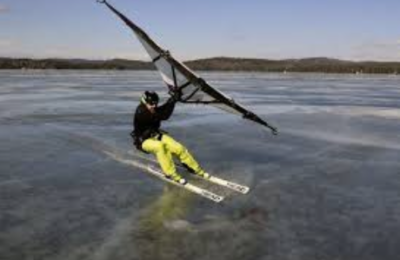
Rigid Frame KiteWing. More recently by a rigid frame-supported device called the Kitewing – both of which were inspired by hang gliding wings.
We didn’t come up with the symmetrical wing concept, but the Slingwing was a FIRST, at least as far as we are aware, in utilizing our inflatable kite technology to ensure a lightweight, safe & floatable product.
Looking back, it’s clear why the Kite Wing worked on snow and ice but the water-bound Wind Weapon never really took off. The reason: Friction (or lack of). Friction is the reason we haven’t seen handheld wings work for water sports, and the reason we kept the Slingwing tucked away in the R&D vault until only recently.
Enter the Foil
Foiling essentially eliminates all friction once you’re up and riding. Being a pioneer and leader in all things foiling, we knew someday soon larger wings with more lift and better riders would evolve to a point where a device like the Slingwing would have a place. Like a lot of things Slingshot and designer Tony Logosz has created over the years, the Slingwing was simply ahead of its time.
1. What is it?
The Slingwing is a single-strut inflatable wing Slingshot first developed almost ten years ago and is officially launching to the public this summer. The wing is symmetrical from end to end and is aerodynamically designed to fly weightless like a giant paper airplane when held horizontal into the wind and to provide propulsion when engaged properly.

Benefits of the inflatable technology
- It’s lightweight
- Easy hand control
- It floats (safety)
- It offers convenient, fast set up
- It’s packable. With easy storage.
- It’s less expensive than rigid frame wings.
Performance Attributes.
- Cruising at all points of sail (upwind, downwind, across the wind)
- Great for catching waves and downwind swell riding
- Easy to tack, jibing and turn
- Easy to disengage all power
- Top Speed determined by your foil and wind speeds
2. Who…
Tony Logosz, Slingshot co-founder, designer, and mad scientist-in-chief, first developed the Slingwing in 2011. The concept was inspired by a horizontal sail called the Wind Weapon, introduced by a windsurfer decades ago in the Columbia River Gorge, and more recently by a rigid frame-supported device called the Kitewing- both of which were inspired by hang gliding wings.
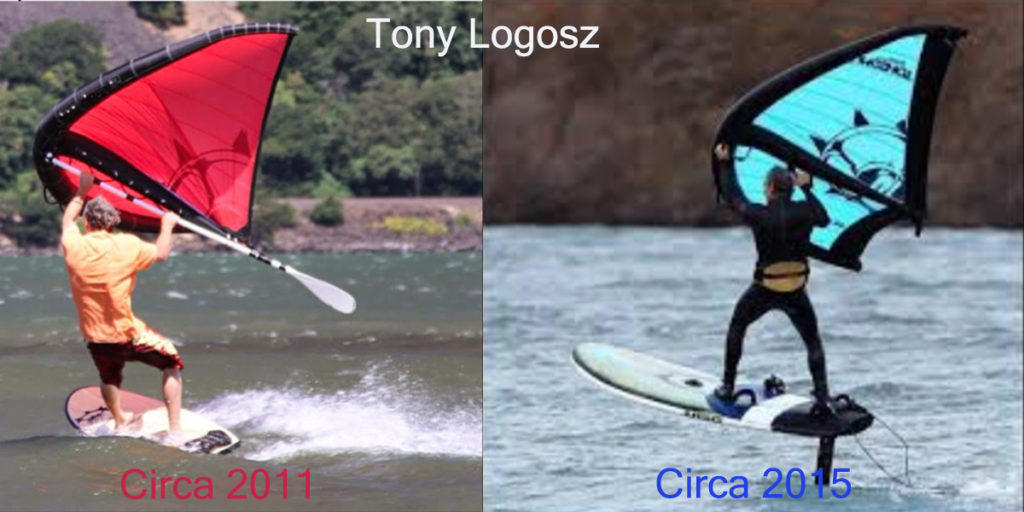
3. When:
The Slingwing was a few years ahead of its time when Logosz made the first prototypes 2011. In Logosz’s words, “We knew the Slingwing was a cool idea in 2011, but it wasn’t until the evolution of foiling- and more specifically the development of big performance foil wings with tons of lift and speed- that we saw a practical application for the creation.”Tony brought Slingwing out of the closet in 2015 to test it with one of the new, larger foils he was developing. He was up and foiling instantly and was able to cut upwind, cruise downwind and ride swell for the first time without the aid a windsurfing sail or kite. He posted a few photos of the session on social media, and when people from around the world responded with interest and intrigue, we knew the Slingwing would soon see its day in the sunshine.
4. Where:
Born in the Gorge and coming to Slingshot dealers around the world soon. We expect the first production models to hit the water Summer 2019. To get on our mailing list for more information about when and where the Slingwing will be released, you can sign-up here.
5. How:
The best thing about the Slingwing is how easy it is to use. You need solid board and foil skills, but you don’t need any kite or windsurfing skills to make it work on your first session. You will need a board with enough volume to float you and enough wind to propel you forward fast enough to get moving and up on foil.
You need a board with enough volume for you to stand on without sinking.
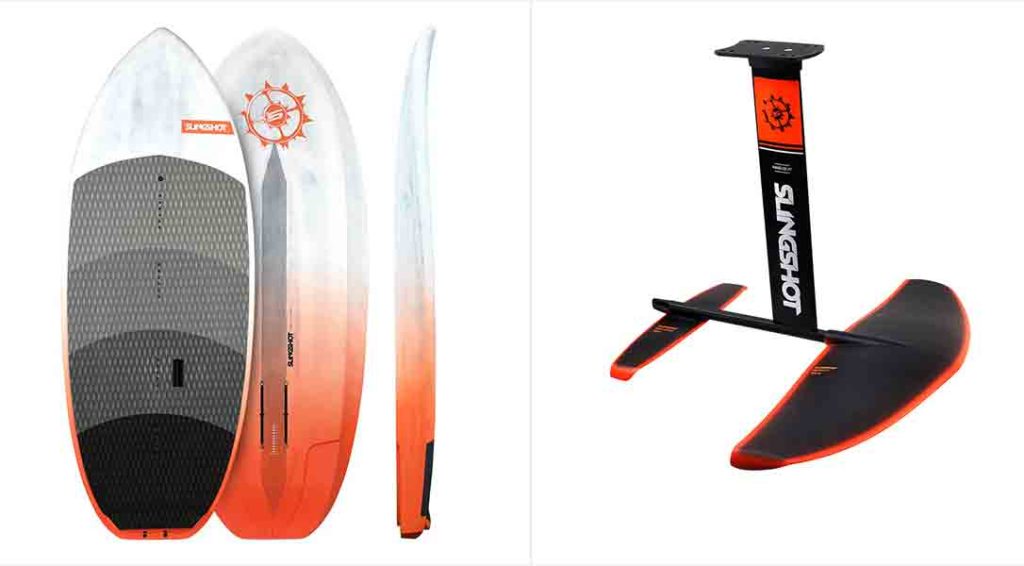
Match a foil board with a hydrofoil big wing – ideally, one designed for surf of SUP surfing. Slingshot recommend the above Outwit board with the Hover Glide FSUP package. As you get better, you can start experimenting with different wings.
– WHAT’S OUR TAKE ON IT –
“The first time I foiled with it was in 2015,” Logosz said. “It’s an excellent tool for an introduction into wind sports because it’s lightweight, it’s inflatable which makes it easy to store and it floats. No boom, no battens. It’s straightforward to learn how to use on a floaty board, and it’s super fun. I think it will get people who don’t kite or windsurf addicted to being pulled by the wind. Kite or windsurf foilers will see it as a novelty, which has lower performance than kiting and windsurfing on a foil but it has its niche because of a different kind of freedom being a handheld wing. As mentioned, people who love to SUP Surf or Wakefoil will be able to access and harness the wind quickly and effortlessly. With big fast foil wings, it’s finally ready for the mainstream market.
Getting Going… First Tip.
Stand on the board your back to the wind and the Slingwing in your front hand. When you’re ready, grab with your back hand and, sheet in and engage the wing into the wind. As you pick up speed, pump your board a few times to get on foil and off you go. It’s really is that simple. When you want to disengage the wing, simply sheet out or let go with your back hand altogether and it floats in the wind with essentially no resistance. Transitions take a little hand-to-hand coordination, but it’s honestly very simple to figure out.
Why a rush to market is bad for YOU.
In the water sports industry, there are typically two types of companies. Inventors/innovators and fast followers. We have already seen four “me too” versions of the Slingwing hit the internet recently. New products and new categories mean companies tend to rush to market to claim their stake. This is risky for the consumer. A copy of a copy is just a copy. It does not mean the company or the developer knew exactly what the context of the design was in the first place. The versions of this wing concept we see coming to market are copies of our early prototypes. These prototypes had issues that we worked through and solved.
The usability problems don’t show up in a photo or video on Instagram in the hands of a professional athlete, but they will make an appearance in the hands of the average user. The Slingwing, on the other hand, has almost ten years of development history- more than all the other versions combined. The Slingwing is a well thought out, tested and refined piece of water sports equipment, developed by a company that is no stranger to being first and doing it right. They say imitation is a form of flattery. We say you know you’re winning when you’re being copied.
Why can’t I get one today?
We have been sitting on this innovation for 4 years. Here is why it’s just coming to market now.
- Tony’s innovations are usually a couple of years ahead of any market, and after more than 20 years in the industry, we have learned to be patient on racing to market before there is a market. This leads us to the second reason …
- We needed enough foilers with the right equipment and experience before we needed a new way to pull them around. After a few years, big performance hydrofoil wings designed for five watersports have built an audience that is now ready for a new product. That makes this an exciting time.
When can I get one?
Expect the first production models to hit the water Summer 2019.
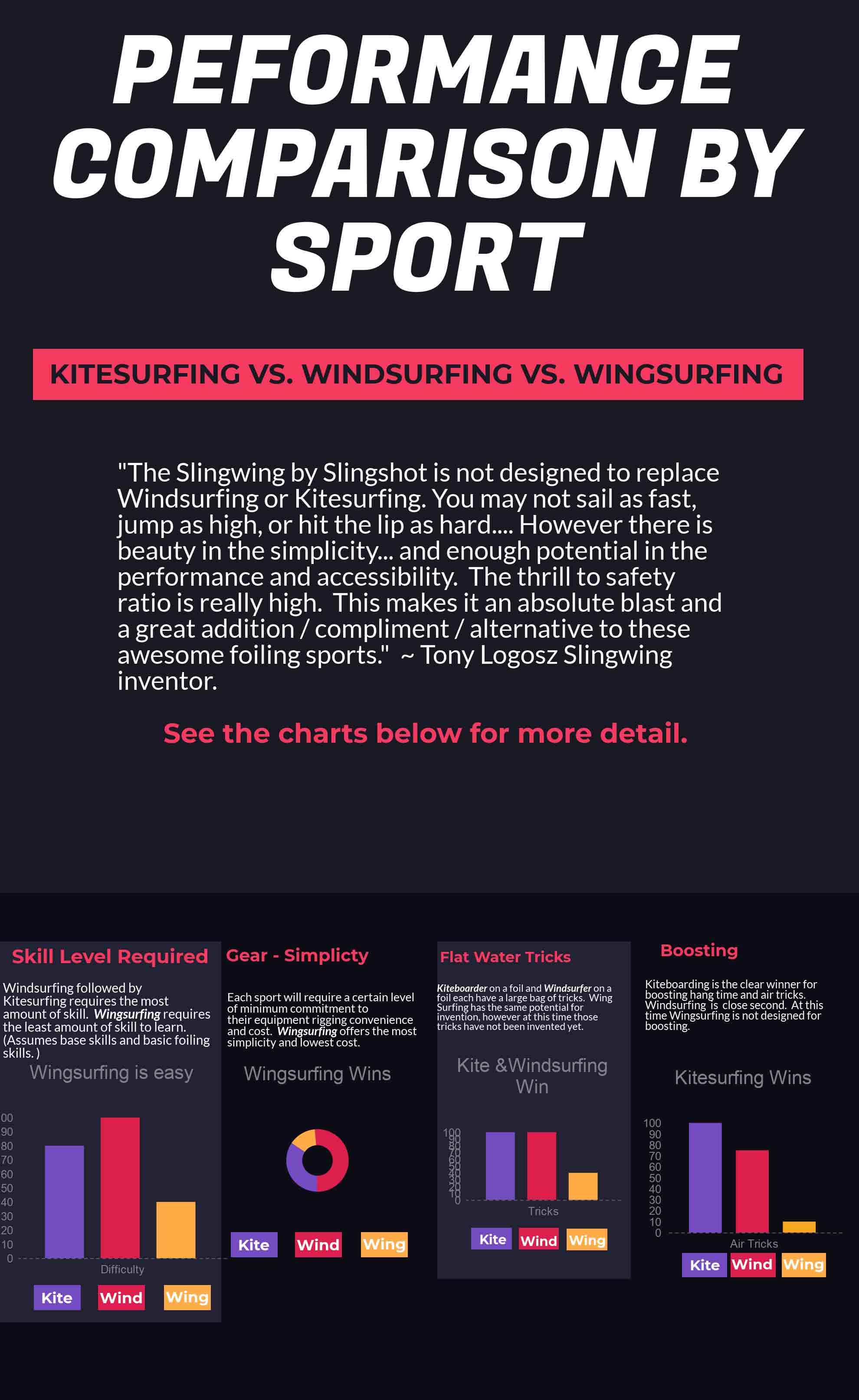
Fuente: https://blog.slingshotsports.com

